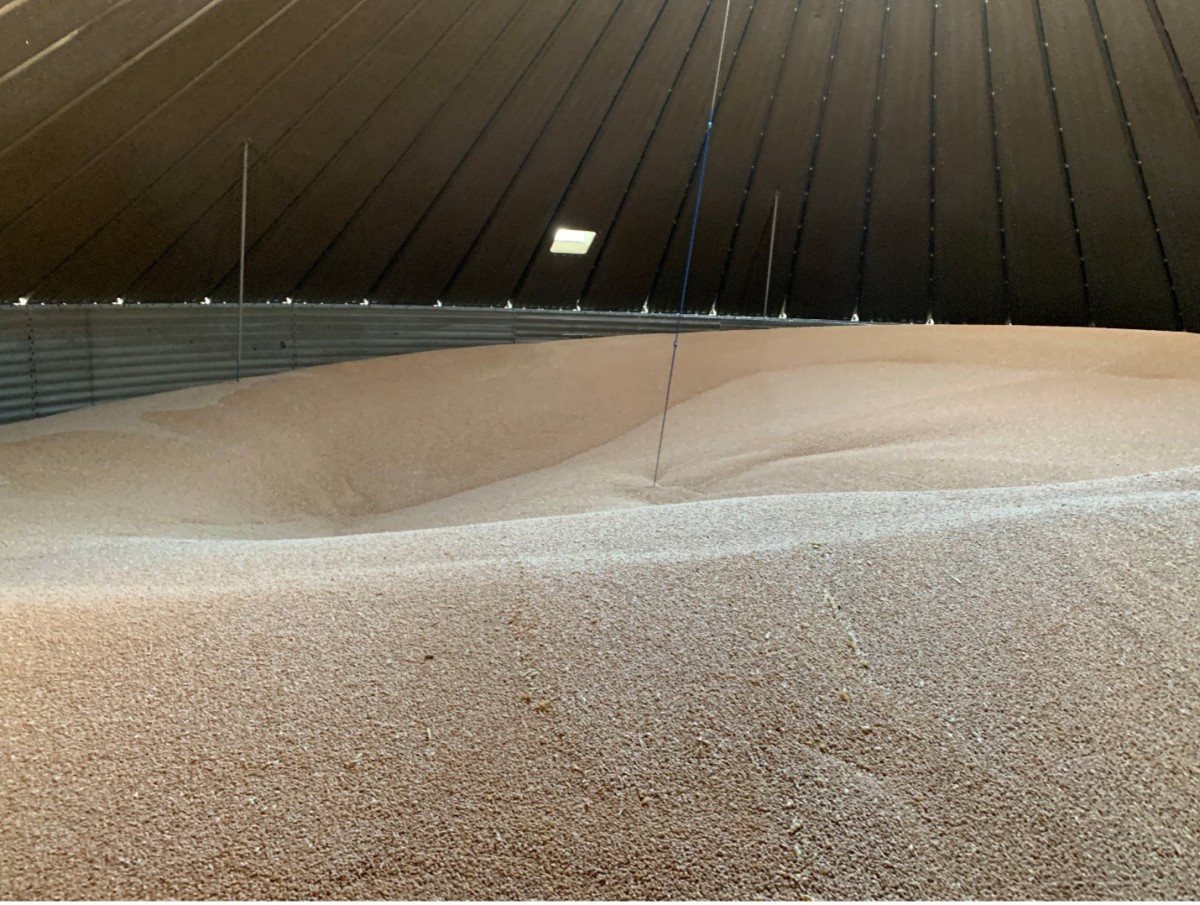Optimizing the on-farm wheat drying operation
In the Prairie Provinces, shorter growing seasons, early frost and uneven maturity create challenges in harvest and safe storage of the grains. One of the tools to manage late and uneven maturity is grain drying. Dr. Chandra Singh, senior research chair in agricultural engineering and technology at Lethbridge College specializes in post-harvest storage and handling and shines some light on maintaining grain quality along with saving energy during the grain drying process.
Dr. Singh and his team’s study looks at on-farm grain drying operations in different growing regions. The data for the study were collected from several farms. The farms practice different types of drying methods, including:
• High temperature drying (cross-flow and mixed-flow dryers)
• In-bin natural air drying
• Combination drying (high temperature drying followed by in-bin drying)
The study measured the initial and final grain moisture, airflow rate, fuel and electricity uses along with milling and baking qualities. Please note that the results so far are preliminary. The final results will be available in March 2024. Let us look at the drying methods one by one.
High-temperature drying
Both crossflow and mixed-flow high-temperature dryers were investigated. Drying efficiency in mixed-flow dryers ranged between 19-78 per cent while for cross-flow dryers ranged between 31-89 per cent. Cross-flow dryer burners were easy to clean in comparison to the mixed-flow dryer, thus, showing higher efficiency. It is highly recommended to clean the burners regularly for optimal dryer performance. For future dryer consideration, ease of burner cleaning should also be a factor in addition to capital cost and capacity.
In high-temperature drying, air temperature has an impact on dryer efficiency. When the air is cooler, the dryer requires more energy to heat the air, causing less efficiency. For example, early morning drying operations are expected to be the least energy efficient. When possible, use the dryer on warmer days or warmer parts of the day to save energy.
Similarly, lower grain temperatures reduce dryer efficiency too. When grains are cooler, they require more energy to reach the temperature desired for moisture evaporation. For this reason, combination drying is more efficient as the grain that is dried using high temperature is used in in-bin drying to remove an additional 2-3 per cent moisture.
Another note for making the dryer energy efficient is finding the proper discharge rate, or bushels of grain that runs through the dryer per hour. Reducing discharge rate results in decreasing efficiency regardless of grain moisture and air temperature and may impact the grain milling quality due to potentially excessive heating of the grain. Grain dryer operators are encouraged to find the optimum range of discharge rates according to the dryer size and moisture to be removed.
The dryer efficiency is also influenced by the initial grain moisture. When grain moisture is higher (>18 per cent), the dryer efficiency is high too. Low-temperature drying is more economical for removing 2-4 per cent moisture, provided, the bin is equipped with sufficient airflow and ambient air is warm (>5 C). A combination drying approach (high-temperature drying followed by in-bin natural air drying) should be adopted to harness the benefits of both drying approaches.
Combination drying
Combination drying is the method in which high-temperature drying is followed by in-bin natural air drying. It has shown promising results in the Peace and North grain growing regions. In this study, combination drying was 19-33 per cent more energy efficient than high-temperature drying, when used to dry grain from 19.5-13.5 per cent moisture.
In Singh’s study, combination drying was executed by drying from 19-20 per cent wet basis (wb) to 14-15 per cent wb in dryers (Operated at full heat of 160-170 F, drying 1400 to 1700 bushels per hour (bu/h) for decreasing ambient temperature) followed by additional 1-1.5 per cent moisture removal in a 10,000 bushel bin (8050 bushels filled) with 0.4-0.8 cubic feet per minute of air per bushel (cfm/bu) airflow rate. The in-bin drying took approximately 8-13 days with automated fan control and based on weather conditions variability.
Natural Air Drying
In-bin natural air drying was conducted at Lethbridge College’s Advanced Post-harvest Grain Storage and Handling research facility in two 20,000-bushel bins.
Automated in-bin natural air drying with heater showed that the fan ran only for 29-31 per cent of the total time from September to November of 2022. This drying method successfully reduced grain moisture from 18-14 per cent while maintaining the grain quality with no degradation in grade, no shrinkage and showed high protein (14-16 per cent) upon selling to the elevator.
Coring of grain is critical to ensure uniform in-bin drying and avoiding spoilage. Grain naturally forms a peak when loaded into the bin. During the drying process, the air takes the path of least resistance and exits the grain before reaching the peak. Thus the poor airflow through the core causes inefficient, slow, and non-uniform drying. Coring is the practice that removes the peaked portion of the grain. It flattens the peak and ensures uniform airflow through the grain. In Singh’s study, coring is done by unloading 1,600 bushels in a 45,000-bushel bin to remove the peaked portion of grain (Figure 1). The practice increased the specific airflow near the centre. For instance, a peaked 12,000 bushel bulk showed 4 per cent less airflow on three quarters of the top surface than a cored 16,600 bushel grain bulk.

Figure 1. Cored wheat to ensure uniform airflow during in-bin natural air drying
Grain Quality Testing
Twelve CWRS wheat samples (six before drying and six after drying) were sent to Cereals Canada lab in Winnipeg, MB, for milling and baking quality analysis. Grain passed through the drying-cooling phase in the dryer. Drying temperature varied from 160-200 F with 1000-1700 bu/h discharge. Initial moisture varied from 16.5-23 per cent wb while final moisture was observed to be 12.8-15.8 per cent wb.
Quality analysis showed potential risks associated with some high temperature drying. For example, the lower initial moisture grains operated at 1700 bu/h and higher initial moisture grains operated at 1000 bu/h were graded as No. 2 due to “Hard Vitrous Kernel” factor after drying. Besides, they showed poor “Dough Handling Properties” and good to acceptable “Total Bread Score”. The sample with 17 per cent initial moisture dried in high-temperature dryer showed an unacceptable “Total Bread Score”. These results further exemplify the requirement of in-bin natural air and combination drying.
Conclusion
For removing high moisture (>4 per cent), combination drying is more energy efficient compared to high-temperature drying. For removing 2-4 per cent moisture, in-bin drying (with or without low-temperature heaters) would be efficient provided bins are equipped with properly sized aeration fans. Coring (1-2 truck loads) can significantly improve the airflow rate. Grain bins equipped with moisture cables and automated fan and heater control are recommended to achieve energy-efficient, uniform and timely in-bin drying.
For more information on grain drying, please contact Dr. Chandra Singh
chandra.singh@lethbridgecollege.ca
Additional resources:
Using supplemental heat to manage grain in the bin- PAMIMonitoring grain temperature and aerating grain- canadian grain commission
